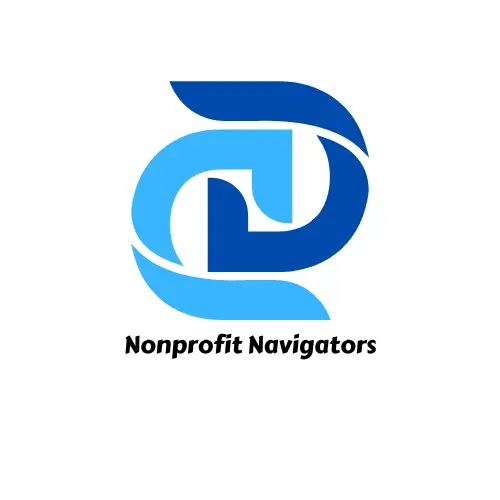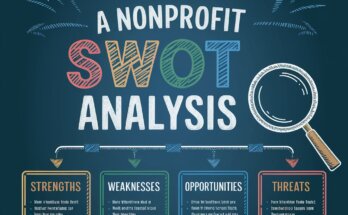Nonprofit strategic planning is a crucial process that helps organizations outline their mission, vision, and long-term goals. However, many nonprofits, whether newly established or well-established, often make common mistakes that can hinder their growth and impact. d them.
These mistakes may seem small but can have a big impact on the organization’s success, so understanding them is key to building a more effective nonprofit.
Have you ever wondered why some organizations thrive while others struggle to make an impact? The answer often lies in their strategic planning process.
In this post, we’ll break down the most common mistakes in nonprofit strategic planning. Each mistake will come with a simple explanation, a real-life example, and a solution you can apply immediately.
Let’s make your nonprofit’s strategy strong, actionable, and ready to change the world.
1. Focusing on the Plan, Not the Purpose
It’s easy to get caught up in writing a detailed strategic plan—all the charts, buzzwords, and long documents. But if your team loses sight of the purpose behind the plan, it becomes meaningless.
The Mistake
Nonprofits often create plans just to “check the box” and show funders they have one. These plans gather dust on a shelf instead of driving daily decision-making.
Example
Imagine a youth development nonprofit. They wrote a 50-page plan with great goals, but never revisited it. The team was unsure how to prioritize activities, and eventually, they fell behind on their programs.
The Fix
Make your strategic plan action-oriented. Every section of your plan should tie directly to your organization’s mission. Create quarterly goals and review them regularly to ensure they guide your work.
Engage with this: Take 5 minutes and answer this question: What is the ONE thing your nonprofit must accomplish this year to stay aligned with its mission?
2. Lack of Stakeholder Involvement
Many nonprofits think strategic planning is the job of the leadership team alone. This mindset excludes important perspectives and weakens the final plan.
The Mistake
Ignoring input from staff, board members, volunteers, and community stakeholders creates a plan that doesn’t reflect the realities on the ground.
Example
An animal shelter designed a fundraising strategy without involving volunteers who care for the animals. The result? The strategy ignored valuable insights about what donors care about most—pet stories and updates.
The Fix
Involve key stakeholders early and often. Hold brainstorming sessions, surveys, or focus groups. When everyone feels included, your plan will reflect diverse ideas and foster greater ownership.
Engage with this: Who in your nonprofit should you consult before creating your next strategic plan? Make a quick list!
3. Unrealistic Goals Without Clear Metrics
A strategic plan without measurable goals is like a ship without a compass—it has no direction.
Another frequent mistake is setting goals that are too ambitious or unrealistic. While aiming high is important, it’s also critical to make sure your goals are achievable. Nonprofits, especially small ones, can burn out quickly if they aim for too much without the necessary resources or time.
For instance, a small nonprofit with a limited staff might set a goal to expand nationwide within a year, which is simply not feasible given the available resources. A goal like this can lead to frustration and demoralization when things don’t progress as expected.
The Mistake
Some nonprofits set lofty goals, like “ending homelessness in our city,” but fail to define realistic milestones or metrics to track progress.
Example
A food bank planned to “double the number of families served,” but they didn’t have the data infrastructure to measure families accurately. Without metrics, they couldn’t tell if they achieved success.
The Fix
Set SMART goals: Specific, Measurable, Achievable, Relevant, and Time-bound. For example: “Increase the number of meals served by 25% over the next 12 months.”
Engage with this: Share one SMART goal your nonprofit is working toward this year. Comment or write it down to keep it top of mind.

4. Ignoring Financial Sustainability
Even the most ambitious plans will fail without solid financial backing. Yet, many nonprofits focus solely on programs and forget about sustainable funding.
The Mistake
Strategic plans often lack a financial strategy. Organizations launch new initiatives without considering how they will fund them long-term.
Example
A literacy program expanded to new schools but relied on one-time grants. When funding dried up, they had to scale back, disappointing students and parents.
The Fix
Include a funding plan in your strategic roadmap. Diversify your income through grants, individual donations, corporate sponsorships, and earned income.
5. Overlooking Implementation Plans
A brilliant strategy is useless if it isn’t executed. Many nonprofits fail because they don’t create a clear roadmap for turning plans into action.
The Mistake
Nonprofits draft a great plan but don’t outline who does what and when.
Example
A health nonprofit aimed to launch a new program but didn’t assign roles or deadlines. Six months later, nothing had happened because no one knew where to start.
The Fix
Break your plan into actionable steps with clear owners, timelines, and milestones. Use tools like Asana or Trello to keep everyone accountable.
6. Neglecting to Update the Plan
Strategic plans should evolve with your nonprofit. Sticking to an outdated plan is like using a road map from 20 years ago—it won’t get you where you need to go.
The Mistake
Some nonprofits treat strategic plans as a one-and-done exercise.
Example
During the pandemic, a nonprofit providing in-person mentoring stuck to its old plan and lost participants. They didn’t adapt to virtual mentoring quickly enough.
The Fix
Review and update your strategic plan annually to adjust to internal and external changes.
A Story to Illustrate the Power of Planning
Let me tell you about Hope for Tomorrow, a small nonprofit helping low-income students access college education. Three years ago, they struggled. Their programs were impactful, but they had no clear strategic plan, no financial sustainability, and their staff were overwhelmed.
Then, they did things differently. They:
- Involved their staff and students in brainstorming sessions.
- Set SMART goals like “Increase scholarships by 20% in 2 years.”
- Built a robust funding strategy, including a donor stewardship plan.
- Created an implementation plan with clear roles and quarterly check-ins.
Today, Hope for Tomorrow has tripled its donor base, increased its scholarship fund, and even launched new mentorship programs. This transformation all started with a strong strategic plan.
7. Not Aligning Plans with Mission and Values
Your strategic plan must align with your mission and values to inspire your team and build trust with donors.
The Mistake
Some nonprofits chase funding opportunities that don’t fit their mission, which leads to mission drift.
Example
A youth-focused nonprofit accepted a grant to run senior programs. The result? Staff were stretched thin, and their youth programs suffered.
The Fix
Stick to your core mission. Evaluate every opportunity against your strategic plan and values.
Engage with this: What is your nonprofit’s core mission? Write it down and use it as a filter for all decisions.
8. Ignoring the Competitive Landscape
Nonprofits often focus only on their own goals and ignore what similar organizations are doing.
The Mistake
Failing to conduct a competitive analysis can leave you unaware of better practices or funding opportunities.
Example
Two animal shelters in the same city applied for the same grant. One won because they included a unique program that the other didn’t know existed.
The Fix
Research other organizations in your niche. Find gaps you can fill or innovative ideas you can adopt.
9. Failing to Prioritize Key Initiatives
Trying to do everything at once spreads your resources thin and causes burnout.
The Mistake
Some nonprofits list too many priorities, making it impossible to execute any of them effectively.
Example
A small nonprofit listed 12 goals for the year, but their staff couldn’t focus. They ended up achieving none of them.
The Fix
Focus on 3-5 key initiatives for each year. Prioritize them based on impact and urgency.
10. Not Tracking and Evaluating Progress
If you don’t measure your progress, how will you know if you’re succeeding?
The Mistake
Many nonprofits fail to establish systems for tracking and evaluating their plans.
Example
A community garden nonprofit set goals to increase outreach but didn’t measure attendance at events. They couldn’t tell if their efforts worked.
The Fix
Use key performance indicators (KPIs) to evaluate your progress. Regularly check your metrics and adjust your approach.
11.Lack of Clear Vision and Mission
One of the most common mistakes in nonprofit strategic planning is failing to have a clear vision and mission. Your mission statement is your nonprofit’s foundation—what you stand for, who you serve, and the problem you aim to solve.
If your mission isn’t clearly defined, your entire strategic plan will lack direction. Without a strong, guiding mission, it’s easy to get distracted and lose focus on the core objectives.
For instance, imagine a nonprofit aimed at improving literacy among underserved children. If the mission isn’t clear—say, it’s vaguely stated as “promote education”—then it will be difficult for the team to measure progress or identify the best ways to allocate resources.
How to Avoid It: Take time to refine your mission and vision statements. A well-crafted mission should be specific, measurable, and motivating. Make sure everyone in your nonprofit can easily articulate it.
One great example comes from Reading Partners, a nonprofit that works to improve literacy: their mission statement is clear, specific, and results-driven: “To help children become lifelong readers by empowering communities to provide individualized instruction.”
Ready to Strengthen Your Strategic Plan?
Strategic planning isn’t just about writing a document—it’s about creating a roadmap for real impact. By avoiding these common mistakes, your nonprofit can focus its resources, engage stakeholders, and move closer to fulfilling its mission.
Want More Expert Nonprofit Tips?
Subscribe to the Nonprofit Navigators Newsletter for expert tips, resources, and opportunities. Get access to job opportunities, grant opportunities, exclusive webinars, and tools to grow your nonprofit.
Don’t miss out—join a community of nonprofit changemakers making an impact every day!




